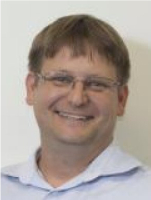(51 1) 489 3145 | (51 1) 721 5245 | (51) 987975959 | informes@congresos.encuentrometalurgia.com

| DAY 1 THEME : UNDERSTANDING SAG MILL PERFORMANCE | ||
|
TIME
|
SESSION | WHO |
|
13:30
|
Registration. | |
|
14:00
|
Welcome by conference organisers. - Safety, Attendees & presenters Brief intro & objectives. |
ALL |
|
14:20
|
Looking inside a SAG mill. - Theory of charge motion. - Energy and breakage environment. - Transportand discharge mechanisms. |
MSP |
|
15:00
|
Factors influencingSAG millperformance. - Feed size& ore characteristics. - Operating conditions. - Liner, grate and pulp lifter design. - Grinding media. |
MMH & MSP |
|
15:30
|
Group discussion. - Operational issues. - Improvement objectives. |
ALL |
|
15:50
|
Break. | |
|
16:20
|
Dynamic behaviour of the mill. - Process control for stable operation. - Lag time for feed rate and load interaction. |
MSP |
|
16:40
|
The SAG mill in a circuit. - Circuit design. - Advantages and risks of pre-crushing. - Discharge and trommel/screen. - Ball mill and influence on final product recovery. |
MSP & MMH |
|
17:45
|
Group discussion. - Operational and control issues. - Limitations of various circuit designs. |
ALL |
|
18:15
|
End Day 1. | |
| DAY 2 THEME : TOOLS TO STAY IN CONTROL | ||
|
TIME
|
SESSION | WHO |
|
08:30
|
Review of Day 1 knowledge by group discussion. | MSP |
|
09:00
|
Performance calibration. - What needs to be measured and why. - Good sampling and measurement practice. |
MSP & MMH |
|
09:30
|
Calculation exercises: Tools for optimising operation. - Size specific energy for monitoring energy efficiency. - Predicting mill filling using a power model. - Tracking liner mass change. |
MMH |
|
10:30
|
Break. | |
|
11:00
|
SAG mill model overview. | MMH |
|
11:20
|
Practical operating controls. Comparing measured mill responses and SAG mill simulations using the new JK VR2 SAG mill model to discuss the effects of changing : - Speed. - Feed rate. - Water addition. - Grates & liners. - Ball load. - Pre-crushing. |
MSP & MMH |
|
12:00
|
Summary and outcomes. | MSP |

Dr. MALCOLM POWELL
Director Anglo American Centre for Sustainable Comminution
JKMRC, Sustainable Minerals Institute
University of Queensland
From a physics background, Malcolm worked at Mintek then established the comminution research and consulting groups at the University of Cape Town. He now leads the comminution research at the JKMRC of the University of Queensland and is director of the Anglo American Centre for Sustainable Comminution. Malcolm collaborates extensively, with close compatriots on 5 continents forming the Global Comminution Collaborative (GCC) providing a comprehensive worldwide research team.
He aims to link fundamental research into applied outputs through the development of mechanistically correct but practical and robust process models. Malcolm has conducted applied surveying and site optimisation studies on over 60 plants worldwide. His interests cover liner design, SAG mill modelling and control, the unified comminution model (UCM), ore characterisation for multi-component modelling, and Flexible circuits - to utilise today’s equipment while enabling the uptake of tomorrows technology. These are published in over 150 articles.
Malcolm’s research vision is of integrated total process simulation as a tool for innovation – linking geology, mining, energy and size reduction, gangue rejection and recovery into flexible process design and process optimisation.

Dr. MARKO HILDEN
JKMRC, Sustainable Minerals Institute
University of Queensland
Marko is a mineral processing engineer and has worked as a comminution researcher at the JKMRC for the past 10 years where he has collaborated mainly on industry-focussed comminution projects and advised post-graduate students. His main research interest is in advancing capabilities in simulating and modelling of comminution processes and assessing their performance. Marko has for the past few years been developing a comprehensive revision of the JKMRC AG/SAG variable rates mill model which is designed to enable improved prediction of production-scale milling performance. His equipment
specialisation also extends into HPGR, stirred milling, screening, and other similar equipment. Marko also has extensive experience in circuit modelling and simulation and developing new circuit simulation tools to deal with multi-component simulation problems, novel circuit configurations and linking comminution to separation processes through modelling the mineral liberation process. Marko has previously worked as a metallurgist at the Tom Price iron-ore operation in Western Australia and as a technologist in Rio Tinto’s coal research group in Melbourne before joining the JKMRC as student to investigate industrial screening.
INVESTMENT:
US$ 480 + IVA
